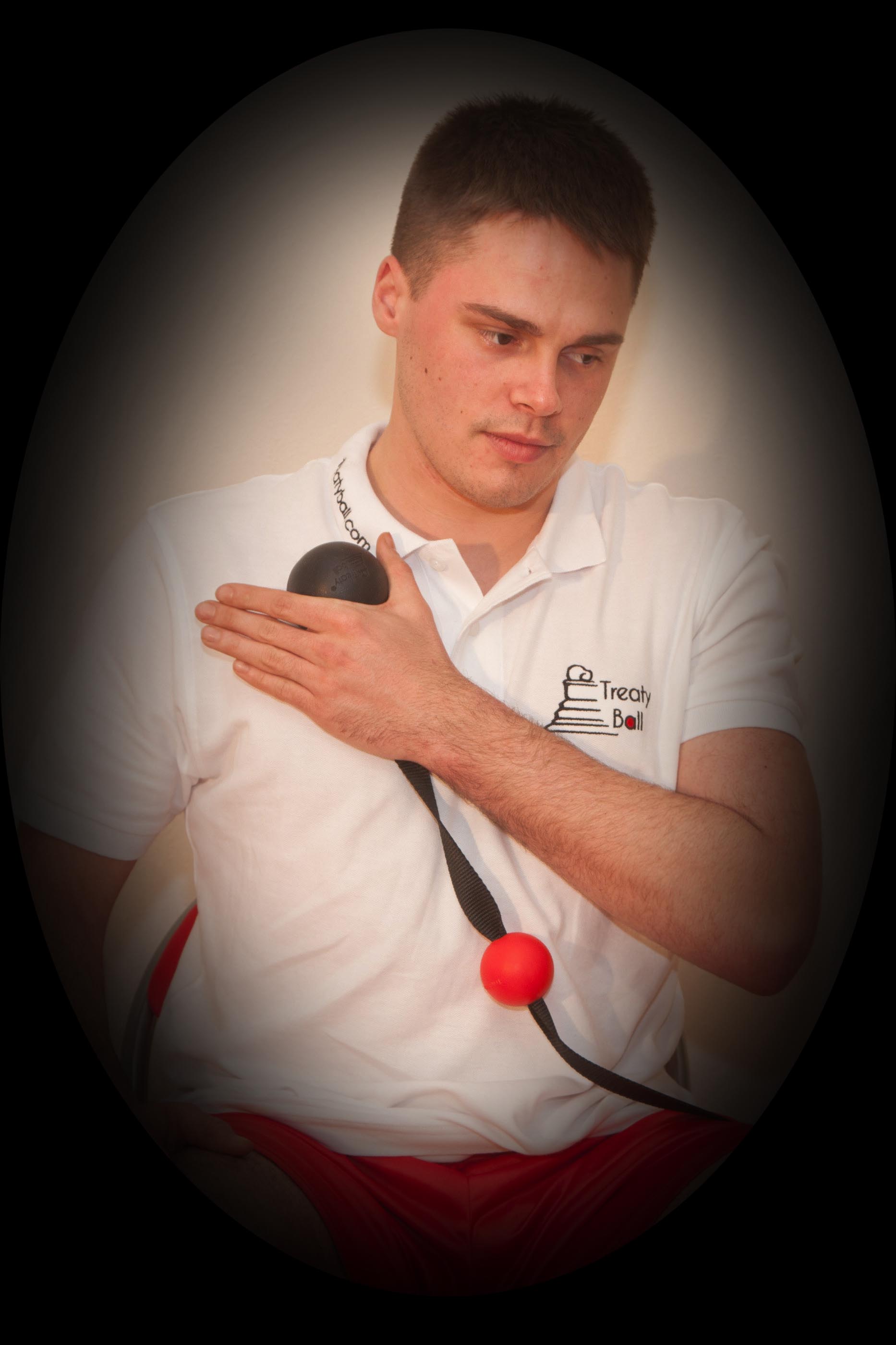
What are Trigger Points (TPs)?
A trigger point is simply a small contraction knot in muscle. This knot feels like a pea buried deep in the muscle, and can feel as big as a thumb. It maintains a hard contraction on the muscle fibres connected to it, thus causing a tight band that can also be felt in the muscle. These trigger points in muscles and in the thin wrapping around each muscle (called fascia) are called myofascial trigger points, to distinguish them from trigger points which can occur in other soft tissues such as skin, ligaments and tendons, and also in scar tissue.
What's the best way to treat TPs?
1. Treaty Ball is your own uniquely designed Physical Therapy tool with two alternative sized rubber balls (one large & one smaller, Moveable ball). They have a specific measured density level, that allows you to penetrate through the layers of tissues and target your Trigger Point (TPs) more specifically and precisely.
2. While leaning against a wall, a chair on lying on the ground use Treaty ball in a controlled manner to discover the Trigger point, then gently apply pressure at first to knead (gently roll) into the muscle this will elicit therapeutic discomfort.
3. Knead with short repeated strokes, moving the skin with the Treaty Ball, and releasing at the end of each stroke to go back to the starting point. While at the same time controlling your breathing to aid relaxation.
4. Do the stroke in one direction only, whether with the grain of the fibres or across them.
5. Do the stroke slowly, no more than one stroke per second.
6.Now knead a little deeper into the Triggerpoint (allow your body weight to help exert disired pressure into the muscle.) to the point of feeling tension, and NOT into pain.
Aim at a discomfort level of 6 - 7 on a scale of 1 to 10. Now hold this position until you feel the therapeutic discomfort easing off.
7. The pressure is gradually applied, maintained, and then gradually released. It can be held for as long as 60 seconds, but mostly the desired effect is achieved in 10-20 seconds. Pause before gradually reapplying pressure three or four more times, perhaps moving to another part of the muscle if the treated area feels 'looser' or softer to the touch. Take your time on each trigger point as they all will vary according to their different size so trigger until your therapeutic discomfort eases off..
8. Work a trigger point 3-5 times per day, until pressure on it decreases.
9. If you get no relief, you may be working the wrong spot.
10. After you have performed Trigger point therapy it is very important to stretch with Treaty Ball. Use the stretching strap by placing the rubber handle over your foot (for lower body stretching) and in your hand (for upper body stretching) then use the moveable red ball to act as a lever by tilting it to lock onto the strap, which will give you an opportunity to maximise your stretch potential.
Gradually and gently stretch the treated muscle through its full range of movement up to 3 times, for 3 to 10 seconds hold each time, with a pause to deep breathe and consciously relax between each cycle.
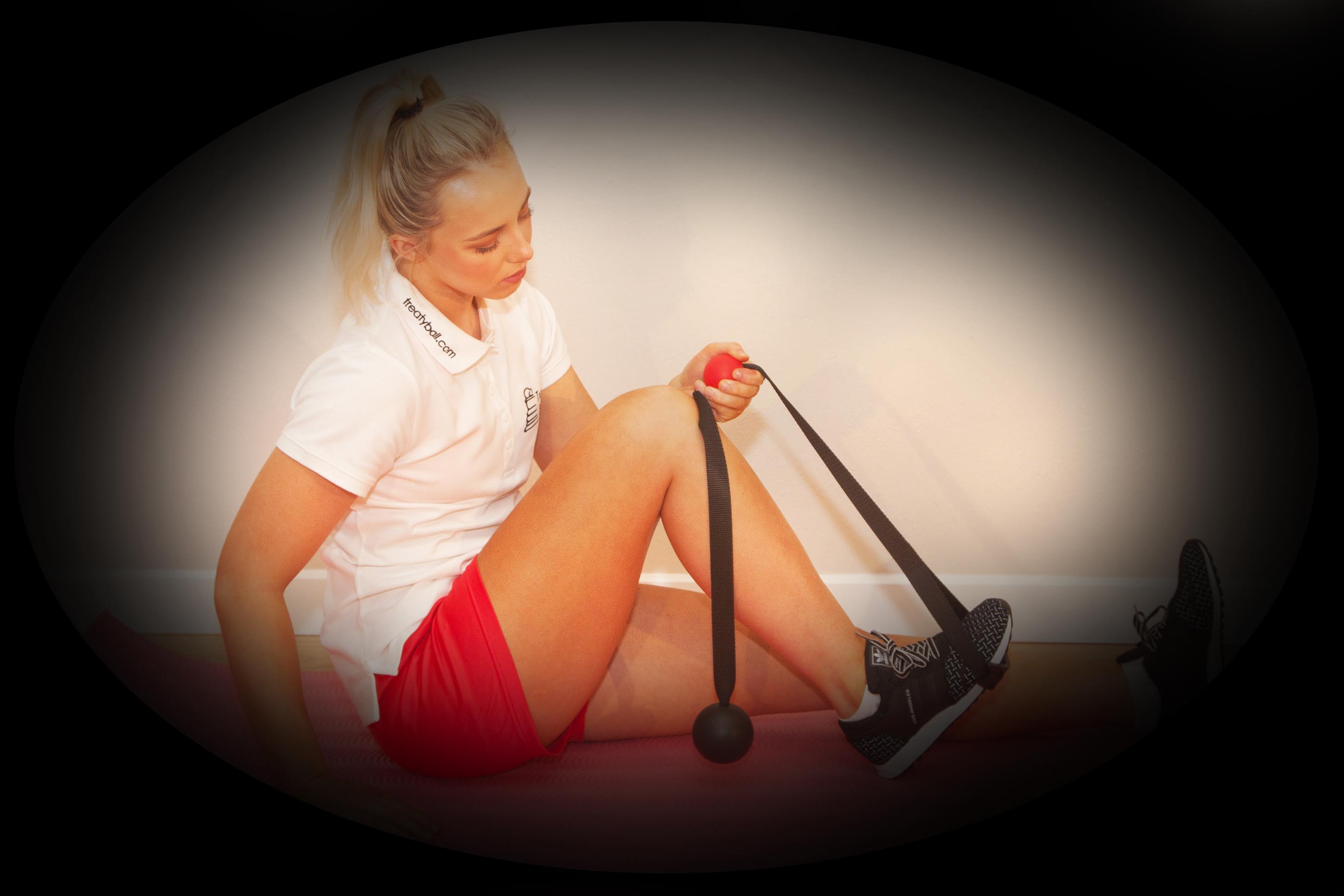
Are TPs the same as a muscle spasm or strain or tear?
No, a TP is not the same thing as a muscle spasm. A spasm involves a violent contraction of the whole muscle, whereas a TP is contraction in only a small part of a muscle. A strain or tear involves physical damage to the muscle or tendon fibres, Such damage has not been demonstrated in studies of TPs. (However, such injuries may predispose one to developing TPs there later on.)
Why are they called Trigger Points?
Pressing firmly on muscle TPs hurts right where you are pressing, making you jump, wince and pull away. But, more importantly, TPs also send ('refer') pain or tenderness to some other site, often quite far away. So, for example, a headache may not be caused by a problem in the head itself, but have been sent to the head from a TP on the side of the neck. Never assume the problem is at the place that hurts.
What does this referred pain feel like?
The referred pain caused by TPs is usually steady, dull and aching, often deep. It may occur at rest, or only on movement. It varies from being a low-grade discomfort to being severe and incapacitating.
Are TPs common?
Myofascial trigger points are among the most common, yet poorly recognised and inadequately managed, causes of musculoskeletal pain seen in medical practice.
What common conditions are thought to be due to referred pain from TPs?
TPs are known to cause or contribute to headaches, neck and jaw pain, low back pain, the symptoms of carpal tunnel syndrome and tennis elbow, and many kinds of joint pain mistakenly ascribed to arthritis, tendonitis, bursitis, or ligament injury.
What other symptoms may TPs cause?
Apart from pain, TPs may cause numbness, tingling, weakness, or lack of normal range of movement. TPs can also cause earaches, dizziness, sinus congestion, nausea, heartburn, and false heart pain. And they may result in depression if pain has been chronic.
How can one know where the TPs are?
It is important to realize that the TPs themselves do not hurt, (other than when you are actually pressing firmly on them.) Most patients are surprised to locate a very painful tight spot in a muscle well away from where they feel their pain is. They were usually completely unaware that this painful tight spot even existed, let alone that such a small spot could be the cause of all their pain.
So how do you know where to find that spot?
Fortunately, referred pain occurs in predictable patterns, which have been clearly mapped out in The Trigger Point Manual by Simons and Travell or on triggerpoint.net. Using their maps you will know which areas to search for the TPs that characteristically send pain to the place where you are hurting. Then feel for a tight muscle in that area, feel for tight bands within that muscle, and localize an area within the band which is exquisitely tender and that is the TP. As you press or twang it, the muscle may twitch. As you keep pressure on it, it will cause your usual referred pain, thus confirming that we've got the spot, and as you apply the controlled pressure your pain will dissolve.
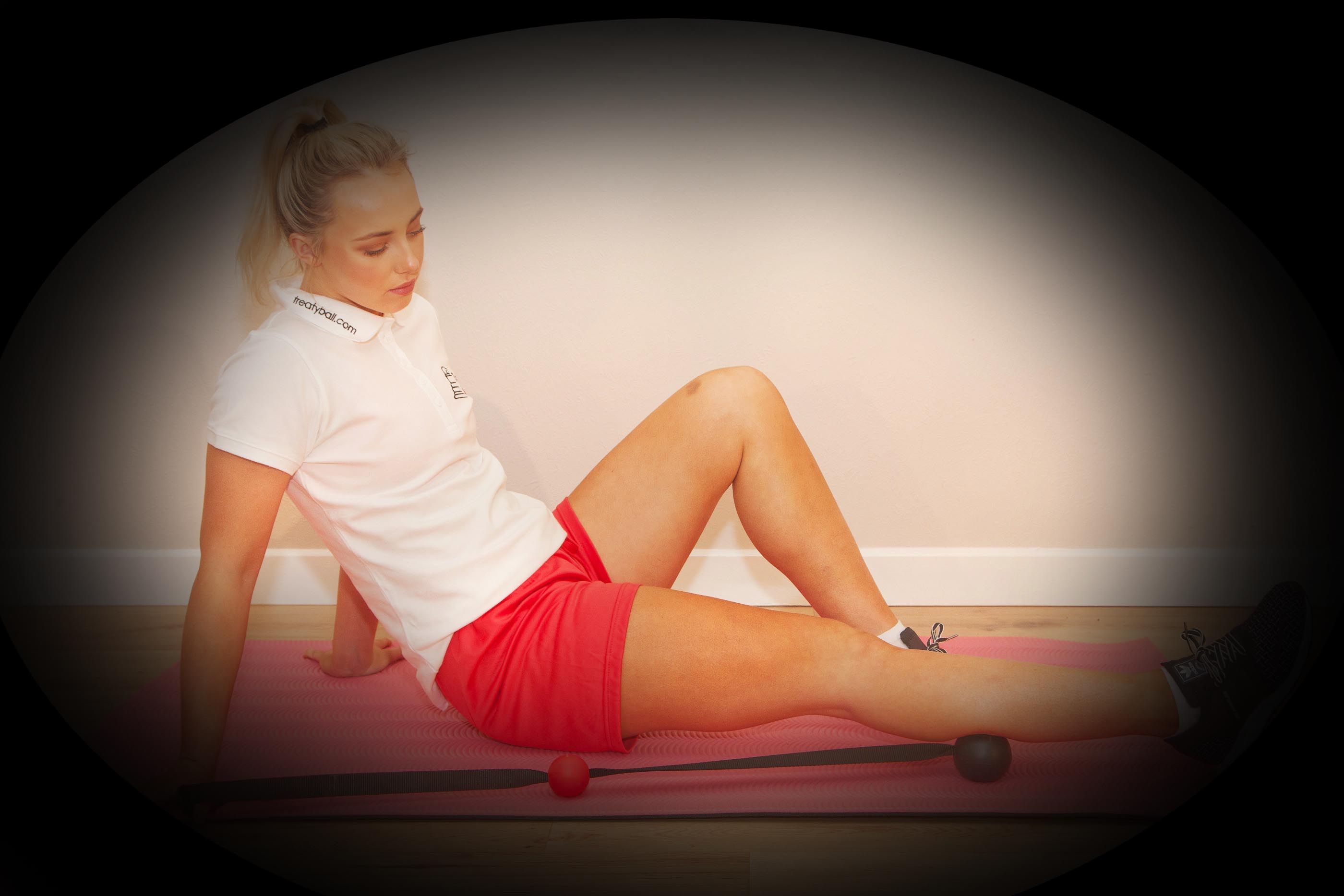
Could there be more than one TP causing my problem?
Yes, TPs tend to gather together, so in practice it is common to find more than one TP in the tight muscle, and more than one muscle whose TPs refer pain to the area where you are hurting. All your TPs need to be tracked down and treated before you'll gain full relief of your symptoms. After a while you'll become expert at finding the trigger points for yourself.
What causes TPs to develop?
All of us develop tight bands in our muscles as we age, Then, some of these tight bands go on to develop TPs in them, when one or more 'Precipitating factors' arise. For example, a TP may develop following an acute muscular strain such as during a car accident, a fall, a sprain or fracture, or excessive or unusual exercise. Or following chronic overload of the muscles used to maintain posture because of poor sitting, working or sleeping habits, or by repetitive work tasks.
Could poor general health be making my TPs even worse?
Yes, particularly if your pain has been happening a while, it is very likely that one or more of the following 'Perpetuating factors' is present: Mechanical stresses such as a short leg, flat foot, poor posture, or immobility. Nerve root pressure, eg sciatica. Chronic internal diseases, and some prescription medications. Nutritional deficiencies, especially vitamins C, B-complex and iron. Hormone imbalances (low thyroid hormone levels, premenstrual or menopausal) Infections (bacterial, viral or yeast) Allergies (wheat and dairy in particular) Poor oxygenation of tissues (aggravated by tension, stress, inactivity, poor sleep, smoking) These factors MUST be detected and corrected if specific treatment of the TPs is to be successful or lasting, Chronic fatigue syndrome and fibromyalgia also predispose one to develop TPs, (in addition to all the other tender spots characteristic of those conditions).
How long will the pain take to get better?
With TPs of recent onset, significant relief of symptoms often comes in just minutes, and most acute problems can be eliminated within 3 to 10 days. But longer-standing chronic conditions are more complex and less responsive to treatment. Nonetheless, even some of these problems can be cleared (in as little as 6 weeks) IF you persist with treatment AND if you fix the Perpetuating factors referred to above.
How are TPs treated?
TPs can be treated in a number of different ways, depending on the speciality or training of the practitioner. Doctors may use local anaesthetic, saline, or cortisone injections, but acupuncture needling, use of a cold spray whilst stretching the muscle, or specific trigger point Therapy with Treaty Ball also works. However there are good reasons to learn how to apply trigger point therapy to yourself. With self-treatment you don't have to wait for an appointment, you can get help whenever and wherever you need it, and you don't pay a cent. You can be the expert in knowing how to get rid of your own pain. With regular use of your own Treaty Ball your symptoms should reduce within hours.
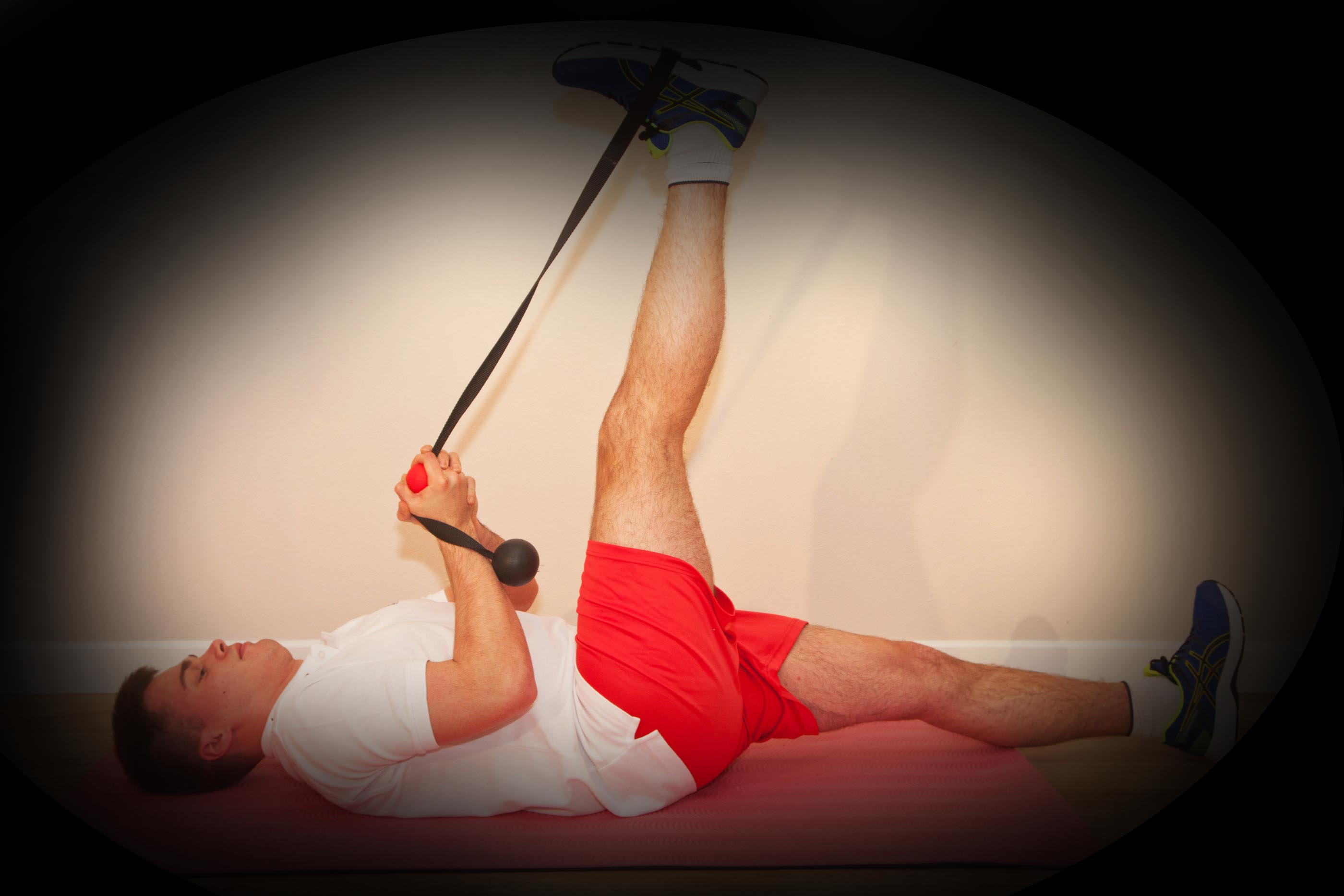
How does Treaty Ball work?
In 3 ways: Controlled applied pressure from your Treaty ball breaks into the self-sustaining vicious circle that has kept the muscle contracted. It increases the circulation, which has been restricted in the immediate area by the contracted fibres, thus enabling oxygen and nutrients to flow to the spot. It directly stretches the trigger point's knotted muscle fibres thus returning to improved range of motion.
What else can I do or avoid to achieve lasting recovery?
Learn respect for your muscles. They were not designed to be held for long periods in a sustained contraction or in a fixed position. Vary your tasks each day. Lift very carefully.
Control your working pace & posture, and take short rests frequently, especially if feeling muscle fatigue.
Do a daily program of passive stretches that puts the affected muscles through a full range of movement, and repeat the stretches throughout the day. Massage any TPs up to a six times a day, for a minute at a time, as described above.
Learn relaxation techniques, (eg yoga, meditation).
Always watch your posture when sitting, reading, using the computer car or phone. Don't stay too long in any one position.
Work out what particular postures, movements and activities stir up your TPs. If you don't have to do that activity, then don't. If you do, then modify how its done.
Avoid getting the muscles cold, by wearing an extra warm layer of clothing, and adjusting heating etc.
Correct any imbalances in your diet, and take vitamin and mineral supplements as recommended by your doctor.
What about exercise?
Exercise should be regarded as a prescription, and the kind of exercise prescribed depends largely on how active your TPs are at that time. Your Physical Therapist will give you the details.
When the TPs are very active and you have pain at rest, then gentle stretches and avoid aggravating factors.
Once the TPs are inactivated and constant rest pain fades, then a carefully graded exercise program is needed to increase muscle endurance and strength. This involves muscle lengthening exercises (adding a new exercise on alternate days), before working up to shortening exercises. Post-exercise soreness and stiffness should not last longer than 3 days or the program needs altering.
Then a regular conditioning program is recommended, at least twice a week, for example swimming or cycling.
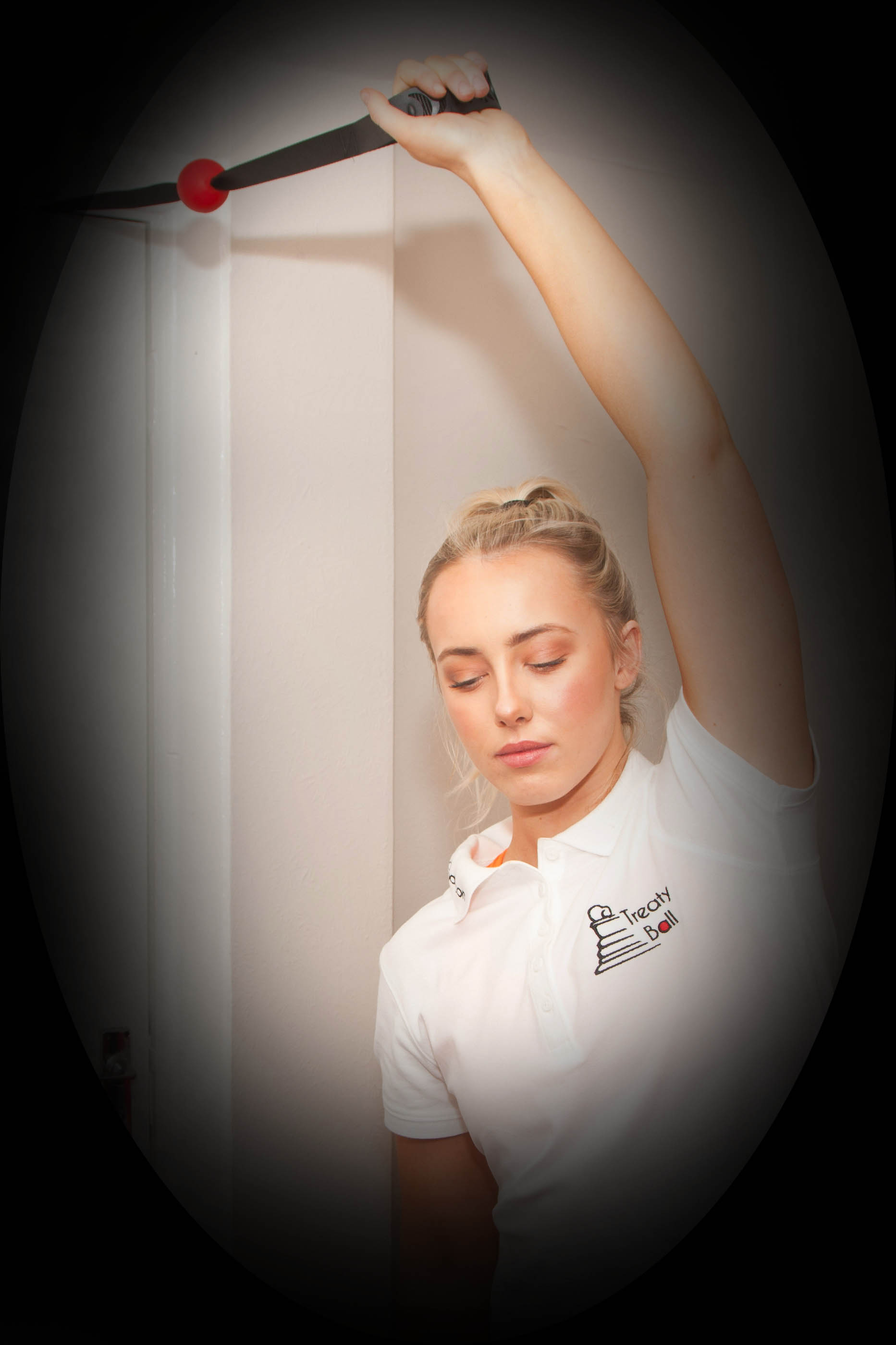
Would the TPs get better if I just rested up?
Yes and no. Studies have shown that with a short period of rest and the avoidance of whatever activated the trigger point, the pain symptoms may disappear over a few weeks. This makes people believe their problems have gone away. But, if you examine the muscle properly you will find it is still tight stiff and weak, and still tender when pressed on. In other words, the TPs are still there; they are just lying dormant (latent), and not causing referred pain at that time. The bad news is that they can be very easily reactivated to cause pain again, by acutely overloading the muscle in a new or repetitive task, working or sleeping in an awkward position, chilling the muscle, or during emotional stress, fatigue, or viral infections. How much it takes to reactivate a latent TP will depend on the degree of muscle conditioning, so keeping fit can help reduce the likelihood of this. But the only way to get rid of the TPs for lasting relief is through actively hunting out and treating all the active and latent TPs. Although this involves more effort, its truly worth it in order to escape "the endless replay" of TP pain.
Precautions
While you really cannot go wrong with self treatment of trigger points, always go gently at the start until you have done it a few times and know what to expect. Remember that the therapeutic discomfort felt during treatment may be quite strong, but never sharp and debilitating. If there is swelling in the area, or if it is warm inside or any nerve problems are present (ie, pins and needles, numbness or weakness), do not try and treat the injury yourself. Other safety precautions to be aware of include making sure you are not pressing on to a major nerve (resulting in pins and needles and, if persisted with, numbness and weakness), and making sure you don't move too much when the pressure is on the muscle, thereby causing aggravation.